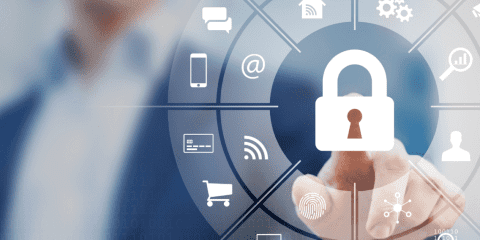
How well is your business prepared for cyber threats as we move into 2024? Looking back at the past year’s cyber threats is key for businesses to build a strong defense plan. Here’s an easy-to-understand breakdown of the recent stats and what they mean for your cybersecurity strategy
A Review of Recent Years’ Cyber Threats:
Ransomware and Malware Increase
In 2023, the money criminals demanded in ransomware attacks jumped to an average of $1.54 million, up from about $812,000 in 2022. This information, reported by SC Magazine, shows that these attacks are becoming more serious and expensive. It’s a clear sign that businesses need to improve their defenses against these types of cyberattacks. This means keeping your security software updated and teaching your team about the dangers of ransomware.
Phishing is Still a Big Problem
Phishing attacks – where scammers trick you into giving out information – are still happening a lot. In fact, CSO Online reports that 57% of businesses see these attacks regularly, making up over 80% of all cyber issues. This highlights the importance of teaching your team how to spot these scams and having strong email security to stop these tricky emails from getting through.
Insider Threats Are a Concern
Insider threats, which happen when someone inside your business either accidentally or on purpose causes a security problem, are involved in about 43% of all breaches. Research from Check Point and Varonis shows that it’s important to keep an eye on internal risks as well as outside dangers. This means making sure everyone understands the rules about data security and regularly checking who has access to what information.
IoT and DDoS Attacks Are on the Rise
Attacks on Internet of Things (IoT) devices and DDoS (Distributed Denial of Service) attacks, which can overwhelm your systems, have also increased. Over 10.54 million IoT incidents were reported in December 2022, and DDoS attacks went up by 15%, according to Statista and Cloudflare. It’s important to secure all devices connected to your network and have a plan to handle sudden surges in traffic that could be an attack.
Building a Stronger Cybersecurity Framework for 2024
Use Better Security Technology
Investing in the latest security technologies is essential. These can detect and respond to threats faster. IBM’s research, available at IBM, shows that using artificial intelligence in cybersecurity helps find and fix problems faster.
Train Your Employees
Helping your employees understand cyber risks is very important. A study by Tessian found that getting distracted is a big reason why people fall for phishing scams. Regular training can help prevent this.
Protect Your Data
As laws about data privacy get stricter, it’s more important to protect your data. This means using strong encryption, controlling who can access data, and keeping everything up to date. Gartner, which you can check out at Gartner, has reported on these increasing privacy requirements.
Use Multi-Factor Authentication (MFA)
MFA, where you use more than one method to prove who you are, is a very important security step. Microsoft says, as seen on their website, that MFA can stop most attempts to take over accounts.
Regularly Check Your Security
Doing regular security checks helps find weak spots in your system. The Ponemon Institute’s study, available at Ponemon Institute, suggests that many businesses don’t know enough about who has access to their systems.
Have a Good Incident Response Plan
If something goes wrong, having a plan can lessen the damage. ThriveDX’s survey, which you can find at ThriveDX, shows that many businesses don’t have a proper plan for cybersecurity incidents.
Follow Cybersecurity Laws
Staying up-to-date with cybersecurity laws helps you avoid legal problems and keeps your reputation strong.
Adapting to the Changing Cyber Threat Environment
Cybersecurity is an ongoing task. Keeping up with new threats and continuously improving your security is essential.
As we enter 2024, making cybersecurity a top priority is crucial for the safety and strength of your business. Understanding the current threats and implementing a well-rounded cybersecurity strategy can protect your business from various cyber risks. Cybersecurity isn’t a one-time fix but a constant effort that needs regular attention and updates. Committing to this will help ensure a safer year for your business.




